
Chapada Diamantina: Brazil's Hidden Gem of Natural Beauty
Discover Chapada Diamantina National Park: A natural wonder in Bahia, Brazil, offering stunning waterfalls, scenic trails, and unique geological formations.
Chapada Diamantina National Park is a breathtaking region in the heart of Brazil's Bahia state. Known for its stunning landscapes, this park offers a unique blend of mountains, valleys, waterfalls, and caves that captivate every visitor. The park is a paradise for nature lovers, hikers, and adventurers looking to explore unspoiled beauty. The park's name, 'Chapada Diamantina,' translates to 'Diamond Plateau,' a nod to the area's history of diamond mining. Today, instead of miners, you will find tourists eager to discover the park's natural treasures. The park is home to some of Brazil's highest waterfalls, including the famous Cachoeira da Fumaça, which plunges over 340 meters. One of the highlights of Chapada Diamantina is its extensive network of trails. These trails lead to scenic viewpoints, hidden waterfalls, and ancient caves. The Vale do Pati trek is particularly popular, often ranked among the best hikes in Brazil. Along the way, you can stay in traditional local homes, experiencing the warm hospitality of the residents. For those interested in geology and history, the park's caves, such as the Poço Encantado and Poço Azul, offer a fascinating glimpse into the region's past. These caves are filled with crystal-clear blue water, providing stunning photo opportunities and a chance to swim in an otherworldly setting. Chapada Diamantina is also a great place for birdwatching, with numerous species of birds endemic to the region. The park's diverse flora and fauna make it a haven for biodiversity, offering countless opportunities for wildlife spotting and photography. Whether you are an avid trekker, a nature enthusiast, or someone looking to unwind in a serene environment, Chapada Diamantina National Park promises an unforgettable experience. Its unspoiled beauty and diverse attractions make it a must-visit destination in Brazil.
Local tips in Chapada Diamantina National Park
- Visit during the dry season (May to September) for the best hiking conditions and clearer views of waterfalls.
- Hire a local guide for treks like Vale do Pati to enhance your experience and ensure safety.
- Bring cash, as ATMs and card facilities are limited in the park and surrounding villages.
- Pack insect repellent and sunscreen to protect yourself from bugs and sun exposure.
- Stay hydrated and carry enough water, especially if you plan on long hikes.
- Don't miss a visit to the Poço Encantado and Poço Azul caves for a unique swimming experience.
Chapada Diamantina: Brazil's Hidden Gem of Natural Beauty
Chapada Diamantina National Park is a breathtaking region in the heart of Brazil's Bahia state. Known for its stunning landscapes, this park offers a unique blend of mountains, valleys, waterfalls, and caves that captivate every visitor. The park is a paradise for nature lovers, hikers, and adventurers looking to explore unspoiled beauty. The park's name, 'Chapada Diamantina,' translates to 'Diamond Plateau,' a nod to the area's history of diamond mining. Today, instead of miners, you will find tourists eager to discover the park's natural treasures. The park is home to some of Brazil's highest waterfalls, including the famous Cachoeira da Fumaça, which plunges over 340 meters. One of the highlights of Chapada Diamantina is its extensive network of trails. These trails lead to scenic viewpoints, hidden waterfalls, and ancient caves. The Vale do Pati trek is particularly popular, often ranked among the best hikes in Brazil. Along the way, you can stay in traditional local homes, experiencing the warm hospitality of the residents. For those interested in geology and history, the park's caves, such as the Poço Encantado and Poço Azul, offer a fascinating glimpse into the region's past. These caves are filled with crystal-clear blue water, providing stunning photo opportunities and a chance to swim in an otherworldly setting. Chapada Diamantina is also a great place for birdwatching, with numerous species of birds endemic to the region. The park's diverse flora and fauna make it a haven for biodiversity, offering countless opportunities for wildlife spotting and photography. Whether you are an avid trekker, a nature enthusiast, or someone looking to unwind in a serene environment, Chapada Diamantina National Park promises an unforgettable experience. Its unspoiled beauty and diverse attractions make it a must-visit destination in Brazil.
When is the best time to go to Chapada Diamantina National Park?
Iconic landmarks you can’t miss
Poço do Diabo
Explore the stunning waterfalls and lush landscapes of Poço do Diabo, a breathtaking natural attraction in Chapada Diamantina, Bahia, Brazil.
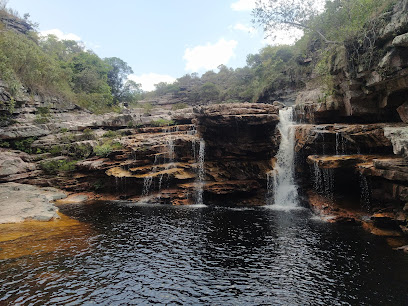
Chapada Diamantina - BA
Explore the breathtaking landscapes and vibrant ecosystems of Chapada Diamantina, Bahia, a hiker's paradise filled with stunning views and rich culture.
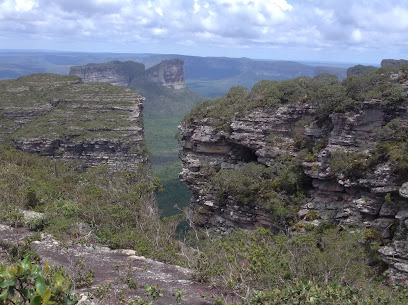
Unmissable attractions to see
Morro do Pai Inácio
Explore the breathtaking views and unique landscapes of Morro do Pai Inácio in Chapada Diamantina, a must-visit natural wonder in Brazil.
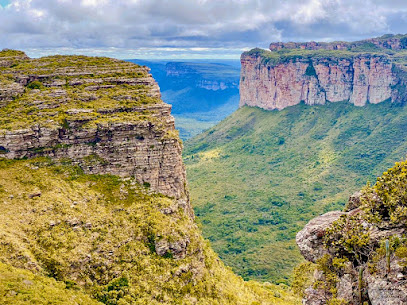
Poço Azul
Experience the breathtaking beauty of Poço Azul, a natural wonder in Bahia, where crystal-clear waters meet stunning landscapes, perfect for relaxation and exploration.
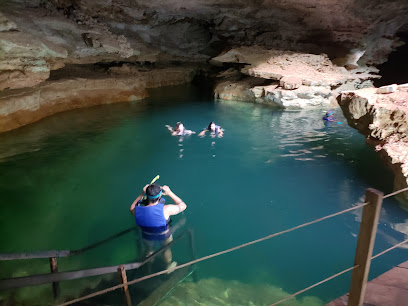
Lapa Doce Cave
Discover the enchanting beauty of Lapa Doce Cave in Chapada Diamantina, Brazil, where stunning rock formations await your exploration.

Pratinha
Explore the stunning waters and lush landscapes of Pratinha in Bahia, a must-visit destination for nature lovers and adventure seekers.
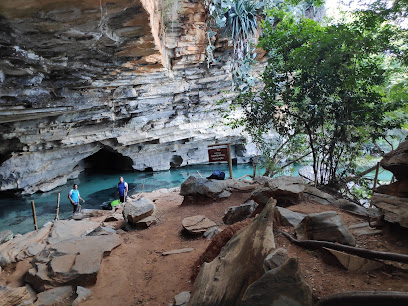
Ribeirão do Meio
Explore Ribeirão do Meio, a breathtaking park in Chapada Diamantina, where cascading waterfalls and lush greenery await your discovery.
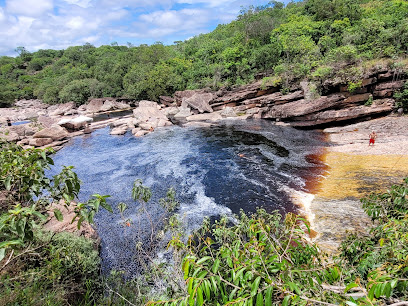
Waterfall Buracão
Explore the stunning Waterfall Buracão in Ibicoara, Bahia – a breathtaking natural attraction perfect for hiking and adventure.
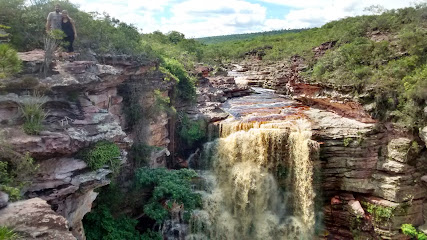
Cachoeira da Fumaça
Discover the breathtaking beauty of Cachoeira da Fumaça, one of Brazil's tallest waterfalls, nestled in the stunning landscapes of Chapada Diamantina.
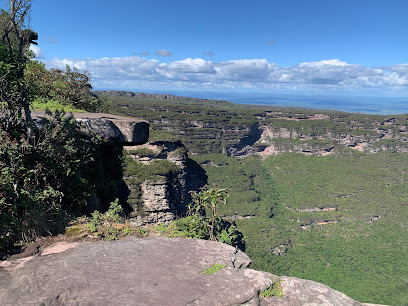
Chapada Diamantina
Discover the breathtaking beauty of Chapada Diamantina, a natural paradise in Bahia, Brazil, perfect for adventure and nature lovers.
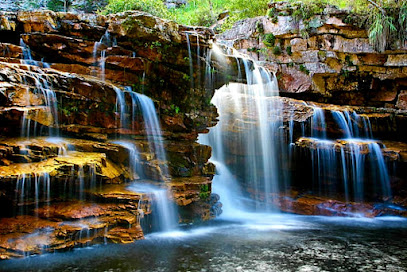
Riachinho
Explore Riachinho in Bahia: A paradise for hiking and nature lovers, featuring stunning landscapes and serene waterfalls in Chapada Diamantina.
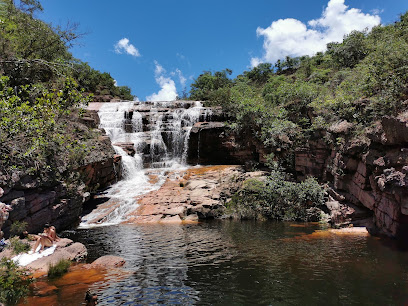
Semper Viva Project
Discover the lush landscapes and unique biodiversity of the Semper Viva Project in Mucugê, Bahia, a paradise for nature lovers and adventure seekers.
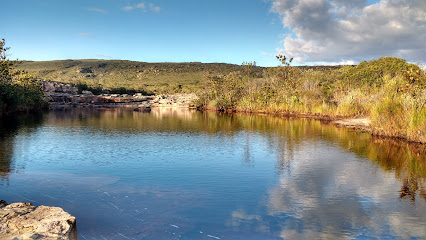
Cachoeira Ferro Doido
Explore Cachoeira Ferro Doido in Morro do Chapéu, Bahia - a breathtaking waterfall and natural park perfect for adventure seekers and nature lovers.
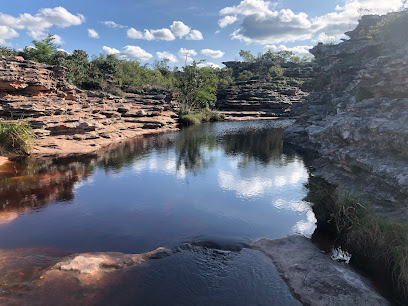
Chapada Diamantina - BA
Explore the stunning landscapes and rich biodiversity of Chapada Diamantina, a hiker's paradise in Bahia, Brazil, offering unforgettable adventures and cultural experiences.
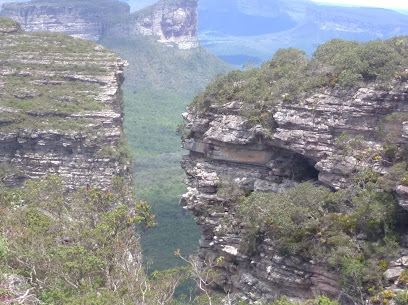
Poço Encantado
Explore the breathtaking beauty of Poço Encantado, a natural swimming pool in the heart of Bahia's Chapada Diamantina, where nature and tranquility meet.
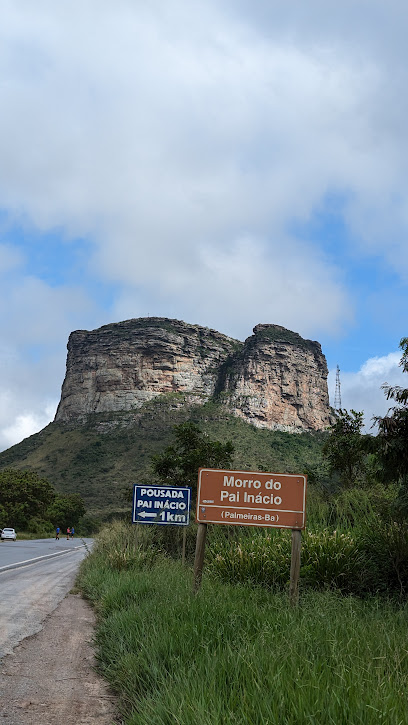
Waterfall Conceição dos Gatos, Palmeiras, Bahia, BR
Explore the breathtaking Waterfall Conceição dos Gatos in Palmeiras, Bahia, a natural wonder perfect for adventure and tranquility.

Trilha do Ribeirão do Meio
Explore the stunning Trilha do Ribeirão do Meio in Lençóis, Bahia - a hiker's dream with breathtaking views and enchanting waterfalls.
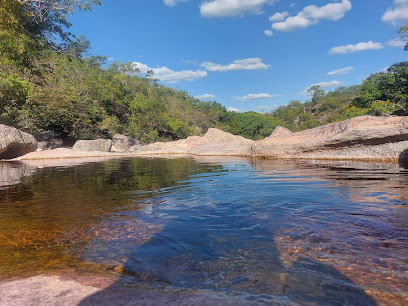
Essential places to dine
Chapada Diamantina National Park
Discover the natural wonders of Chapada Diamantina National Park – a breathtaking blend of stunning landscapes, rich biodiversity, and adventure.
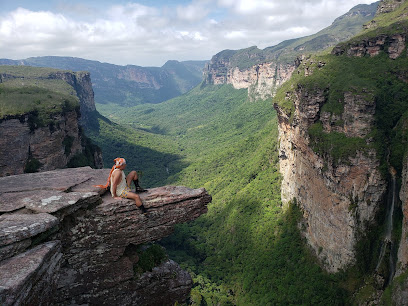
Restaurante Sabor da Serra
Experience authentic Bahian cuisine at Restaurante Sabor da Serra in Lençóis - where every dish tells a story.
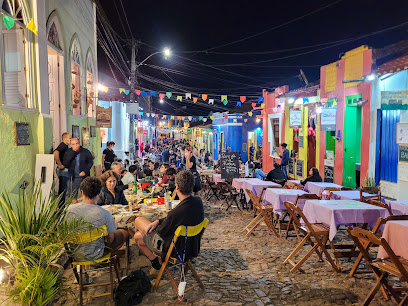
Markets, malls and hidden boutiques
Chapada Diamantina National Park
Discover the breathtaking landscapes and rich biodiversity of Chapada Diamantina National Park, a must-visit destination for nature lovers and adventurers.
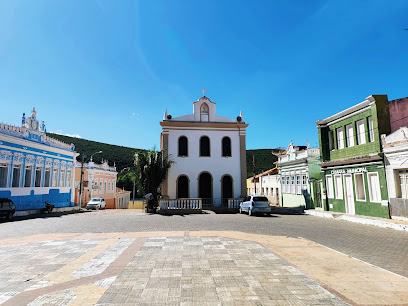
Ribeirão do Meio
Ribeirão do Meio: A Natural Paradise in Chapada Diamantina, Perfect for Relaxation and Adventure amidst Stunning Scenery.
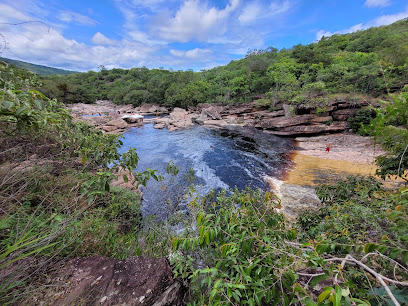
Poço do Diabo
Explore the breathtaking Poço do Diabo in Lençóis, Bahia, where stunning waterfalls meet lush landscapes for an unforgettable nature escape.

Piscinas Naturais do Serrano
Explore the breathtaking Piscinas Naturais do Serrano in Lençóis, Bahia—a natural paradise of crystal-clear pools and vibrant landscapes, perfect for adventure and relaxation.
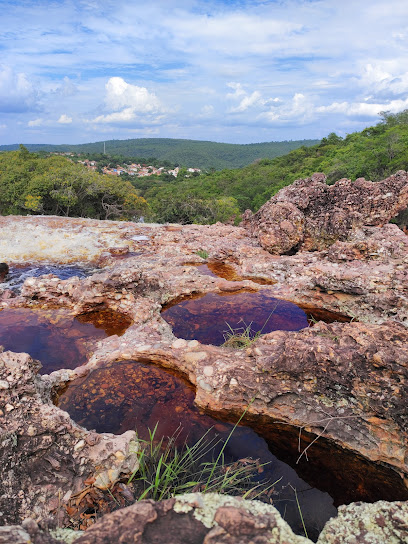
Cachoeira do Mosquito
Experience the breathtaking beauty of Cachoeira do Mosquito, a stunning waterfall in Bahia, Brazil, perfect for adventure and relaxation.
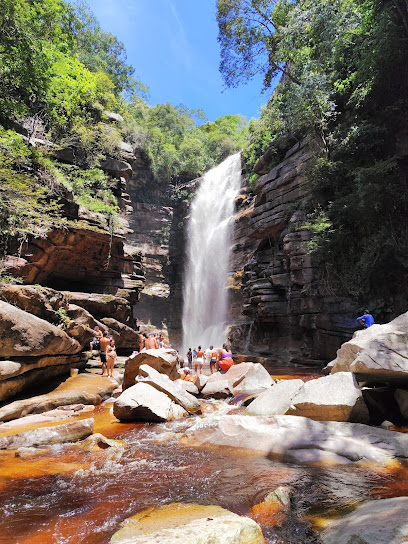
Chapada
Explore the breathtaking beauty of Chapada in Bahia, where stunning landscapes, rich biodiversity, and vibrant culture await every traveler.

Salão das Areias Coloridas
Explore the breathtaking beauty of Salão das Areias Coloridas in Lençóis, Bahia, where vibrant sand dunes create a stunning natural masterpiece.
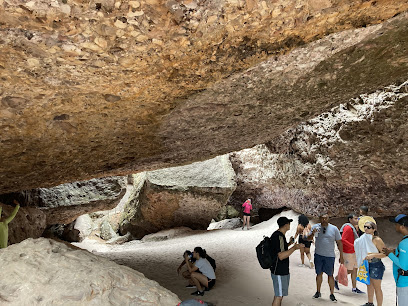
Zentur
Discover the breathtaking beauty of Chapada Diamantina with Zentur, your trusted travel agency in Lençóis, Bahia, specializing in ecotourism adventures.

Gruta do Lapão
Explore the stunning Gruta do Lapão, a natural wonder in Lençóis, Bahia, featuring breathtaking limestone formations and rich ecological diversity.

Mandaçaia - Loja Colaborativa
Explore Mandaçaia - Loja Colaborativa: Your gateway to authentic Bahian crafts and local artistry in Vila do Capão.

Dona Bia Brigaderia
Discover the sweet taste of Brazil at Dona Bia Brigaderia in Mucugê, where gourmet brigadeiros and delightful desserts await every visitor.

Empório Chapada Diamantina
Discover organic delights and authentic souvenirs at Empório Chapada Diamantina in Lençóis, where health meets local culture.
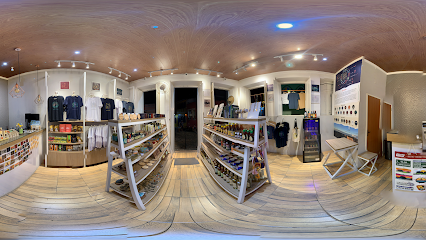
Florescendo Kids
Explore Florescendo Kids in Mucugê, Bahia – a delightful children's store brimming with toys, books, and creativity for young minds.

Hospedaria Quintal Dos Sonhos, Chapada Diamantina, BA, Brazil
Discover the beauty of Chapada Diamantina at Hospedaria Quintal Dos Sonhos - a perfect blend of comfort, adventure, and Bahian hospitality.
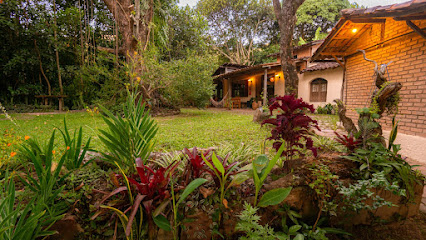
O Boticário
Explore O Boticário in Lençóis for exquisite cosmetics, perfumes, and beauty supplies that capture the spirit of Brazilian elegance.

Essential bars & hidden hideouts
Beco da Bateia
Discover the vibrant flavors of Mucugê at Beco da Bateia, where exceptional pizzas and crafted cocktails await in a cozy atmosphere.
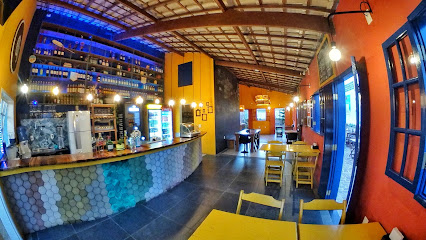
Quilombola
Discover the taste of Bahia at Quilombola, where authentic Brazilian cuisine meets a vibrant atmosphere in the heart of Lençóis.
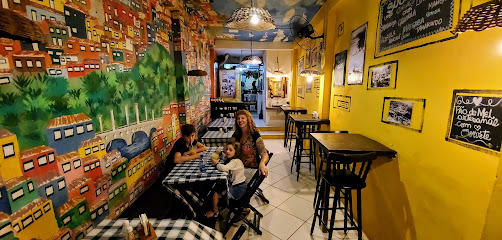
Ovelha'S - Hambúrguer Esbagaçador
Savor the best handcrafted hamburgers and tapas in Lençóis at Ovelha'S, a culinary delight for every food lover.
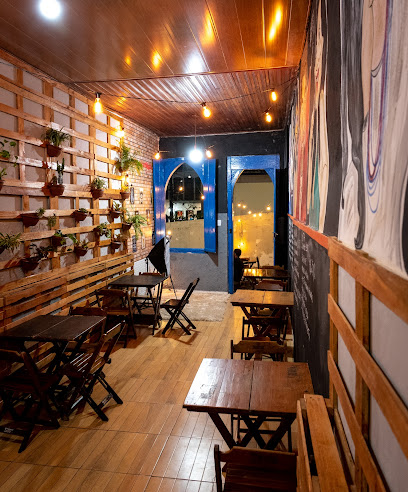
Gatto Sete - Bistrô
Discover the taste of Bahia at Gatto Sete - Bistrô, where culinary delights meet stunning natural beauty.
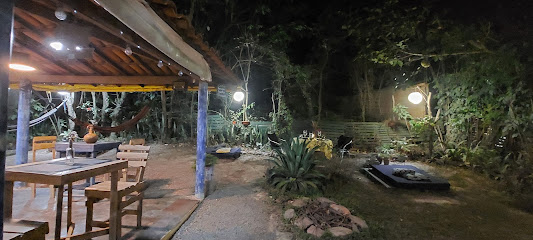
Artes e Sabores Restaurante e Lounge Bar
Experience the flavors of Brazil at Artes e Sabores Restaurante e Lounge Bar, where organic meets delicious in the heart of Lençóis.
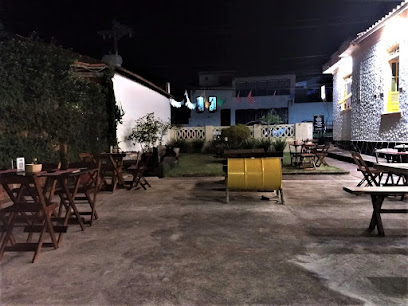
Catingueiro Brew Pub
Discover the vibrant Catingueiro Brew Pub in Lençóis, where craft beer meets local culture in a warm and inviting atmosphere.

Dom Oba
Experience authentic Brazilian flavors at Dom Oba, a vibrant bar and restaurant in Lençóis, Bahia, where local ingredients meet warm hospitality.
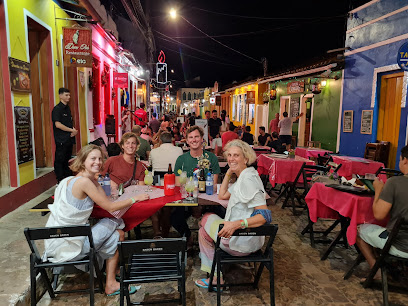
Budha Bar - Restaurante na Chapada Diamantina - Vale do Capão
Experience the tranquil ambiance and local flavors at Budha Bar in Chapada Diamantina, where every meal is a celebration of nature and taste.
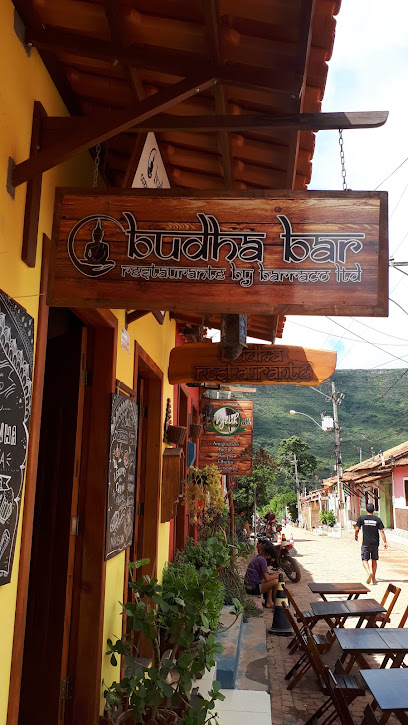
Cervejaria Artesanal Chapada
Experience the essence of Bahia at Cervejaria Artesanal Chapada, a vibrant beer garden offering exceptional handcrafted brews and a lively atmosphere.

Bar de Casa
Discover the flavors and vibrant ambiance of Bar de Casa in Lençóis, a perfect blend of local cuisine and lively atmosphere.
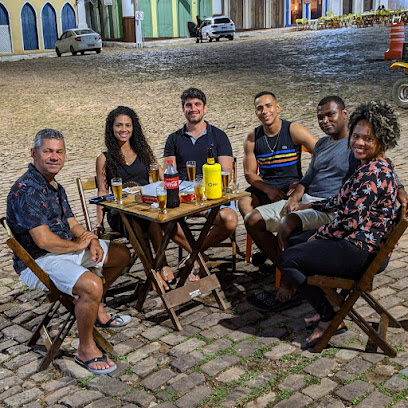
Quiosque De Mardio e Claudia
Discover the authentic taste of Brazil at Quiosque De Mardio e Claudia, a must-visit restaurant in Andaraí, Bahia, offering a rich culinary experience.
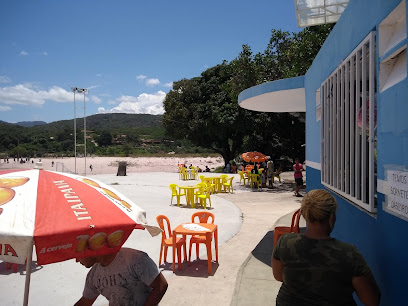
Bar e Restaurante dos Garimpeiros
Experience the authentic flavors of Bahia at Bar e Restaurante dos Garimpeiros, a local gem in Igatu's stunning Chapada Diamantina.
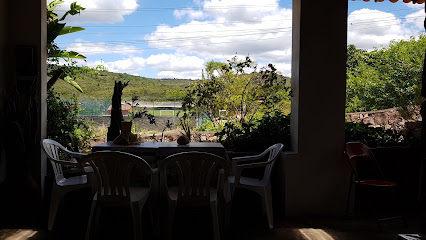
Braseiro do Juba Mucugê
Experience the best hamburgers in Mucugê at Braseiro do Juba, where local flavors and a vibrant atmosphere come together.

Quinca's Botequim
Discover the lively spirit of Quinca's Botequim, a vibrant bar in Lençóis serving exquisite drinks and local bites in a warm atmosphere.
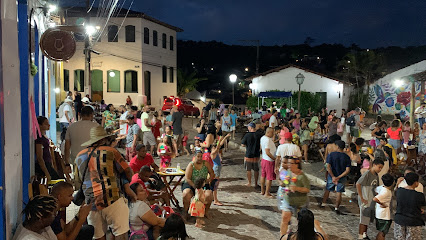
Diamantino Art&bar - Mucuge
Discover the cultural heartbeat of Mucugê at Diamantino Art&bar, where live music and art come together for an unforgettable experience.
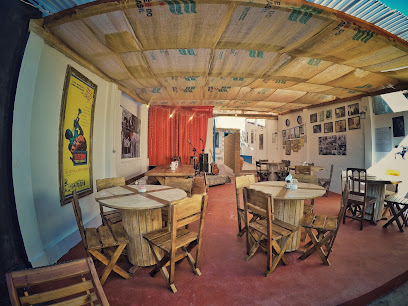
Local Phrases about Chapada Diamantina National Park
-
- HelloOlá
[oh-lah] - GoodbyeTchau
[chow] - YesSim
[seem] - NoNão
[now] - Please/You're welcomePor favor/De nada
[por fah-vor/de nah-dah] - Thank youObrigado(a)
[oh-bree-gah-doh(ah)] - Excuse me/SorryCom licença/Desculpe
[kohm lee-sen-sah/dehs-kool-peh] - How are you?Como vai você?
[koh-moh vah-ee voh-seh] - Fine. And you?Bem. E você?
[behn/eh voh-seh] - Do you speak English?Você fala inglês?
[voh-seh fah-lah een-glehz] - I don't understandEu não entendo
[eh-oo now ehn-tehn-doh]
- HelloOlá
-
- I'd like to see the menu, pleaseEu gostaria de ver o cardápio, por favor
[eh-oo goh-stah-ree-ah deh vehr oh kahr-dah-pee-oh, por fah-vor] - I don't eat meatEu não como carne
[eh-oo now koh-moh kahr-neh] - Cheers!Saúde!
[sah-oo-deh] - I would like to pay, pleaseEu gostaria de pagar, por favor
[eh-oo goh-stah-ree-ah deh pah-gahr, por fah-vor]
- I'd like to see the menu, pleaseEu gostaria de ver o cardápio, por favor
-
- Help!Socorro!
[soh-koh-roh] - Go away!Vá embora!
[vah ehm-boh-rah] - Call the Police!Chame a polícia!
[shah-meh ah poh-lee-see-ah] - Call a doctor!Chame um médico!
[shah-meh oom meh-dee-koh] - I'm lostEstou perdido(a)
[eh-stoh pehr-dee-doh(ah)] - I'm illEstou doente
[eh-stoh doo-ehn-teh]
- Help!Socorro!
-
- I'd like to buy...Eu gostaria de comprar...
[eh-oo goh-stah-ree-ah deh kohm-prahr] - I'm just lookingEstou só olhando
[eh-stoh soh oh-lahn-doh] - How much is it?Quanto custa?
[kwan-toh kooh-stah] - That's too expensiveIsso é muito caro
[ee-soh eh mwitoh kah-roh] - Can you lower the price?Você pode baixar o preço?
[voh-seh poh-deh bahy-shahr oh preh-soh]
- I'd like to buy...Eu gostaria de comprar...
-
- What time is it?Que horas são?
[kay oh-rahz sah-ooh] - It's one o'clockÉ uma hora
[eh oo-mah oh-rah] - Half past (10)Dez e meia
[dehz eh may-ah] - MorningManhã
[mah-nyah] - AfternoonTarde
[tahr-deh] - EveningNoite
[noy-chee] - YesterdayOntem
[ohn-tehm] - TodayHoje
[oh-zhee] - TomorrowAmanhã
[ah-mah-nyah] - 1Um
[oom] - 2Dois
[doh-ees] - 3Três
[treh-s] - 4Quatro
[kwah-troh] - 5Cinco
[seen-koh] - 6Seis
[say-ees] - 7Sete
[seh-teh] - 8Oito
[oy-toh] - 9Nove
[noh-veh] - 10Dez
[dehz]
- What time is it?Que horas são?
-
- Where's a/the...?Onde fica o/um(a)...?
[ohn-deh fee-kah oh/oohm(ah)] - What's the address?Qual é o endereço?
[kwahl eh oh ehn-deh-reh-soh] - Can you show me (on the map)?Você pode me mostrar (no mapa)?
[voh-seh poh-deh meh moh-strahr (noh mah-pah)] - When's the next (bus)?Quando é o próximo (ônibus)?
[kwan-doh eh oh proh-kssee-moh (oh-nee-boos)] - A ticket (to ....)Um bilhete (para ...)
[oom bee-lyet (pah-rah)]
- Where's a/the...?Onde fica o/um(a)...?
History of Chapada Diamantina National Park
-
Before the arrival of European explorers, the Chapada Diamantina region was inhabited by various indigenous groups, most notably the Pataxó, Maracás, and Imboré people. These tribes thrived in the area, utilizing its abundant natural resources for sustenance and spiritual practices. Many of their trails and pathways are still used today, providing a glimpse into the ancient ways of life that once flourished here.
-
The discovery of diamonds in the mid-19th century brought a rush of fortune seekers to the Chapada Diamantina region. The town of Lençóis quickly became the epicenter of this diamond fever, transforming from a sleepy village into a bustling hub. The influx of miners and merchants led to the development of infrastructure and settlements, some of which still stand today as historical landmarks.
-
The environmental significance of Chapada Diamantina led to the establishment of the national park in 1985. The creation of the park aimed to preserve the unique ecosystems, stunning landscapes, and rich biodiversity of the region. This move also sought to protect the cultural and historical heritage left by indigenous peoples and diamond miners.
-
In the 19th century, escaped African slaves established quilombos—communities of resistance and culture—in the remote areas of Chapada Diamantina. These quilombolas created a unique cultural tapestry that blends African traditions with local customs. Today, these communities are recognized for their historical importance and continue to contribute to the cultural richness of the region.
-
Throughout the late 19th and early 20th centuries, explorers and scientists ventured into Chapada Diamantina to map its rugged terrain and study its unique flora and fauna. These expeditions not only expanded scientific knowledge but also highlighted the need for conservation in the face of increasing human activity and exploitation.
-
The establishment of Chapada Diamantina National Park has transformed the region into a major ecotourism destination. Modern-day tourism has brought economic benefits to local communities while raising awareness about the importance of preserving the park's natural and cultural heritage. Visitors today can explore the park’s vast network of trails, caves, and waterfalls, guided by the historical paths laid down by indigenous tribes and diamond miners.
Chapada Diamantina National Park Essentials
-
Chapada Diamantina National Park is located in the state of Bahia, Brazil. The nearest major city is Salvador, which has an international airport, Deputado Luís Eduardo Magalhães International Airport (SSA). From Salvador, you can take a domestic flight to Lençóis Airport (LEC), which is the closest airport to the park. Alternatively, you can take a bus or rent a car for a scenic 6-hour drive to Lençóis, the gateway town to the park.
-
Within Chapada Diamantina, the primary modes of transportation are local buses, taxis, and car rentals. Many visitors prefer to hire a local guide who can provide transportation and expert knowledge of the park. In Lençóis and other nearby towns, you can easily find taxi services and rental cars. Public buses are available but may not reach all the remote areas of the park, so planning ahead is crucial.
-
The official currency in Brazil is the Brazilian Real (BRL). Most hotels, restaurants, and shops in Lençóis accept credit cards, but it is advisable to carry cash for smaller establishments and rural areas. ATMs are available in Lençóis, but it's a good practice to withdraw sufficient cash before heading into more remote regions of the park.
-
Chapada Diamantina is generally a safe destination for tourists, but standard precautions should be taken. Avoid wandering alone at night in unfamiliar areas and be cautious of your belongings in crowded places. Some neighborhoods in Salvador and other larger cities have higher crime rates, so stay informed and stick to well-known tourist areas. When hiking, always go with a guide or in a group, and inform someone of your plans.
-
In case of emergency, dial 190 for police assistance or 192 for medical emergencies. Lençóis has a hospital and several pharmacies for minor health issues. It is advisable to have travel insurance that covers medical emergencies and adventure activities such as hiking. Guides and hotel staff can also assist in contacting emergency services if needed.
-
Fashion: Do wear comfortable and sturdy hiking gear, including boots and sun protection. Avoid wearing flashy or expensive jewelry. Religion: Do respect local religious practices and traditions, especially in small towns. Public Transport: Do be respectful and patient when using public transport, which can be less punctual. Greetings: Do greet locals with a friendly 'Bom dia' (Good morning) or 'Boa tarde' (Good afternoon). Eating & Drinking: Do try local dishes and accept food offerings graciously. Don't waste food, as it is considered impolite.
-
To experience Chapada Diamantina like a local, visit the local markets in Lençóis where you can buy fresh produce and artisanal crafts. Engage with the local guides, who are often knowledgeable and passionate about the park's history and natural beauty. Don't miss the opportunity to explore hidden gems such as the Poço Azul and Poço Encantado, which are less crowded but stunningly beautiful. Participate in local festivals if your visit coincides with one, as they offer a unique cultural experience.
Nearby Cities to Chapada Diamantina National Park
-
Things To Do in Brasília
-
Things To Do in Recife
-
Things To Do in Fortaleza
-
Things To Do in Rio de Janeiro
-
Things To Do in São Paulo
-
Things To Do in Florianópolis
-
Things To Do in Hernandarias
-
Things To Do in Foz do Iguaçu
-
Things To Do in Puerto Iguazú
-
Things To Do in Villarrica
-
Things To Do in San Bernardino
-
Things To Do in Ypacarai
-
Things To Do in Aregua
-
Things To Do in Asuncion
-
Things To Do in Encarnacion













